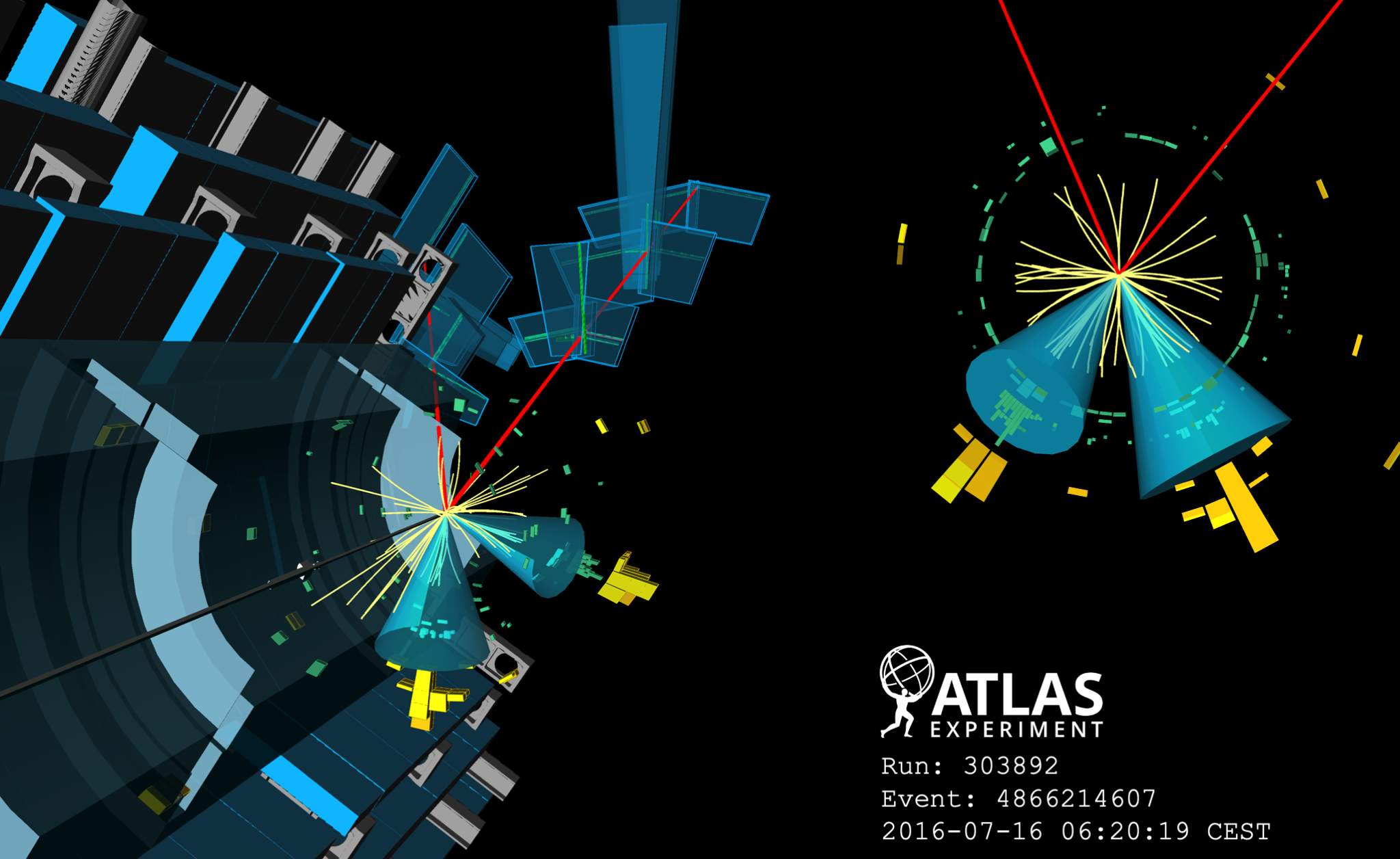New search for charming decay of the Higgs boson
7 June 2021 | By
Key to understanding the Higgs boson and its role in the Standard Model is understanding how it interacts with matter particles, i.e. quarks and leptons. There are three generations of matter particles, varying in mass from the lightest (first generation) to the heaviest (third generation). Although hints of second-generation lepton interactions have started to appear, physicists have only experimentally confirmed that the masses of the heaviest quarks originate from their interactions with the Higgs field. So far, lighter quarks have not yet been observed interacting with the Higgs boson.
At the LHCP2021 conference, the ATLAS Collaboration presented a new direct search for the decay of the Higgs boson to charm quarks. Observing this decay would give physicists new insight into the Higgs boson’s relationship with the second generation of matter particles. Further, measuring the strength (or “coupling”) of the Higgs boson’s interaction to the charm quark could give physicists insight into new physics processes.
But spotting this decay has proven quite the challenge. It accounts for just 3% of Standard Model Higgs boson decays and, more importantly, its search is heavily dominated by background processes. For their new result, ATLAS researchers began by identifying collision events with jets of particles originating from the hadronisation of charm quarks. They used a new multivariate classification method, which would tag hadrons with particular properties, in particular their decay length from the LHC collision point. Then, to maximise their result’s sensitivity to the signal, researchers categorised these events by those containing one or two charm-quark tags.
To further suppress backgrounds from other physics processes, ATLAS physicists targeted their search to Higgs bosons produced together with a vector boson (VH(cc)), where the vector boson (W or Z) decays to 0, 1, or 2 electrons or muons. The di-charm invariant-mass distribution, after subtraction of the backgrounds, is shown in Figure 1.

Researchers validated this analysis strategy by also studying events with two vector bosons that contain the decay of a W boson to one charm quark (VW(cq)) or the decay of a Z boson to two charm quarks (VZ(cc)). The VW(cq) process was measured with a signal significance of 3.8 sigma, and the VZ(cc) process with signal significance of 2.6 sigma. Both measurements, using charm tagging, are in agreement with precision measurements at previous experiments.
Physicists found no significant sign of the decay of the Higgs boson to charm quarks; the result was used to set a limit on the rate of the VH(cc) process (at the 95% confidence level) to be 26 times the rate predicted in the Standard Model. This limit also allowed ATLAS physicists to – for the first time – give a meaningful interpretation of the Higgs–charm coupling (see Figure 2).
ATLAS’ new direct search for Higgs-boson decays to charm quarks constrains the absolute value of the modified coupling (at the 95% confidence level) to be, at most, a factor 8.5 from the value predicted in the Standard Model. After having observed the coupling of the Higgs boson to the heaviest quarks, ATLAS physicists are now expanding their exploration of the coupling of the Higgs boson to the lighter quarks.
Learn more
- Direct constraint on the Higgs-charm coupling using Higgs boson decays to charm quarks with the ATLAS detector (ATLAS-CONF-HIGG-2021-021)
- LHCP2021 presentation by Manuella Vincter: Highlights and perspectives from the ATLAS experiment
- WIN2021 presentation by Tristan DuPree: Higgs boson decays to quarks and leptons
- Search for the Decay of the Higgs Boson to Charm Quarks with the ATLAS Experiment (Phys. Rev. Lett. 120 (2018) 211802, arXiv: 1802.04329, see figures)
- See also the full lists of ATLAS Conference Notes and ATLAS Physics Papers.






